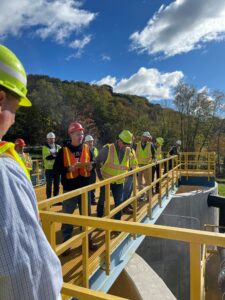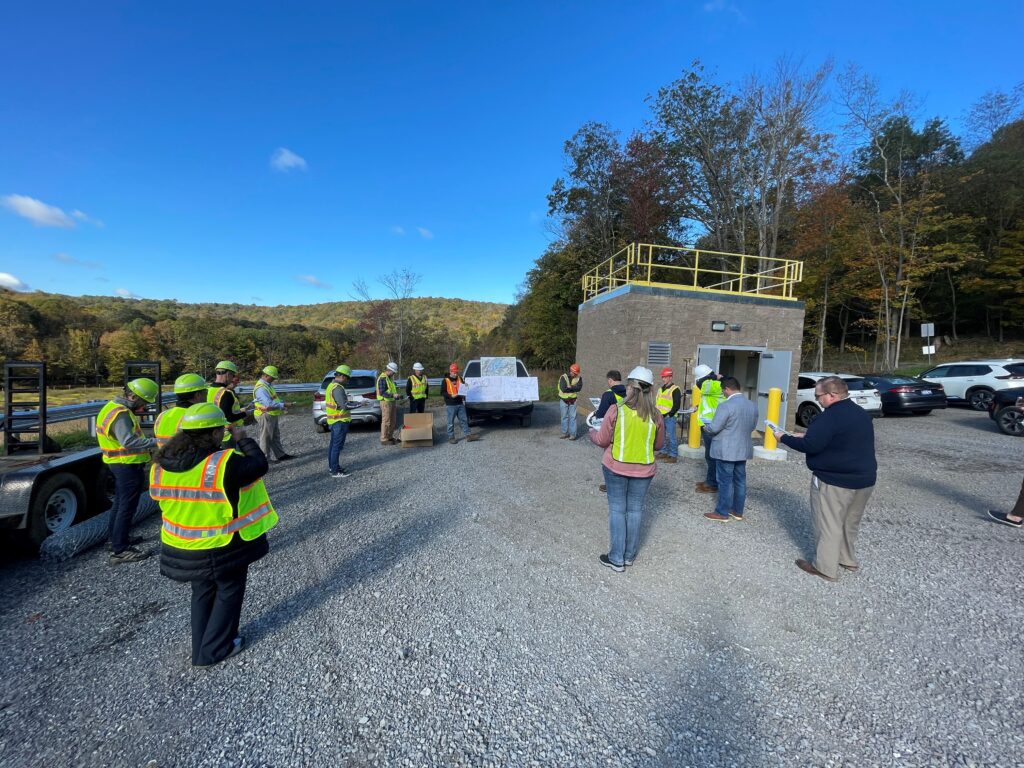WeConvervePA, PA Department of Environmental Protection, and Project Partners Host Tour of Blacklick Creek Stream Restoration Plant – Technologist
Brad Barkdoll, October 11, 2024
 Staff and affiliates from WeConservePA, the Conemaugh Valley Conservancy, and the Pennsylvania Department of Environmental Protection hosted a site tour of the Blacklick Creek Water Treatment Facility in Cambria County, just outside of Vintondale. In addition to organizational staff and affiliates, the site visit included attendance from Senator Wayne Langerholc Jr., Representative James Struzzi, Senator Joe Pittman’s district office Director Jon Longwill, House Republican Environmental Resources and Energy Committee Executive Director Glendon King, Foundation for Pennsylvania Watersheds Executive Director Deb Nardone, and staff from the Cambria County Recreation Authority.
Staff and affiliates from WeConservePA, the Conemaugh Valley Conservancy, and the Pennsylvania Department of Environmental Protection hosted a site tour of the Blacklick Creek Water Treatment Facility in Cambria County, just outside of Vintondale. In addition to organizational staff and affiliates, the site visit included attendance from Senator Wayne Langerholc Jr., Representative James Struzzi, Senator Joe Pittman’s district office Director Jon Longwill, House Republican Environmental Resources and Energy Committee Executive Director Glendon King, Foundation for Pennsylvania Watersheds Executive Director Deb Nardone, and staff from the Cambria County Recreation Authority.
A project of the Pennsylvania Bureau of Abandoned Mine Reclamation, the $27 million dollar project began construction in 2022 and completed earlier this year, with an anticipated date of operation beginning in late November 2024. Sitting on 35-acres of Commonwealth owned land, the facility will eliminate abandoned mine runoff polluting the Blacklick creek from three discharges: Commercial #16, Vinton #6, and the Wehrum Mine shafts. Once fully operational, the plant will be capable of treating up to 7.2 million gallons of water per day, eliminating discharges that will improve approximately twenty-five miles of the Blacklick Creek from Vintondale to the confluence of the Two Lick Creek.
In addition to improving water quality, improvements to the stream will create additional recreation opportunities for the surrounding communities as the Ghost Town Trail runs alongside the stream. Once remediated, the newly cleaned stream will host access sites for kayakers, sportsmen & women for fishing, and those wishing to float or tube downstream. The project is financed by Pennsylvania Capitol Funds, Federal AMD set aside program funds, and the Federal Abandoned Mine Land Economic Revitalization Program (AMLER) funds. The facility is expected to have an annual operating budget of $600,000, which will be funded through Bipartisan Infrastructure Funds.




